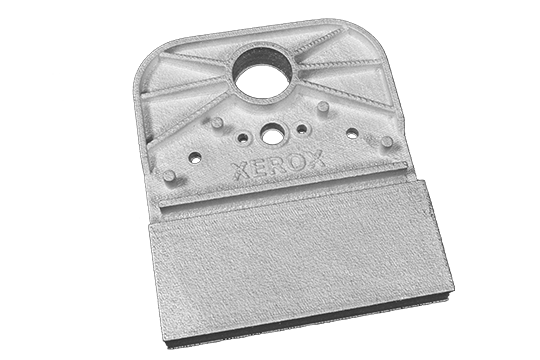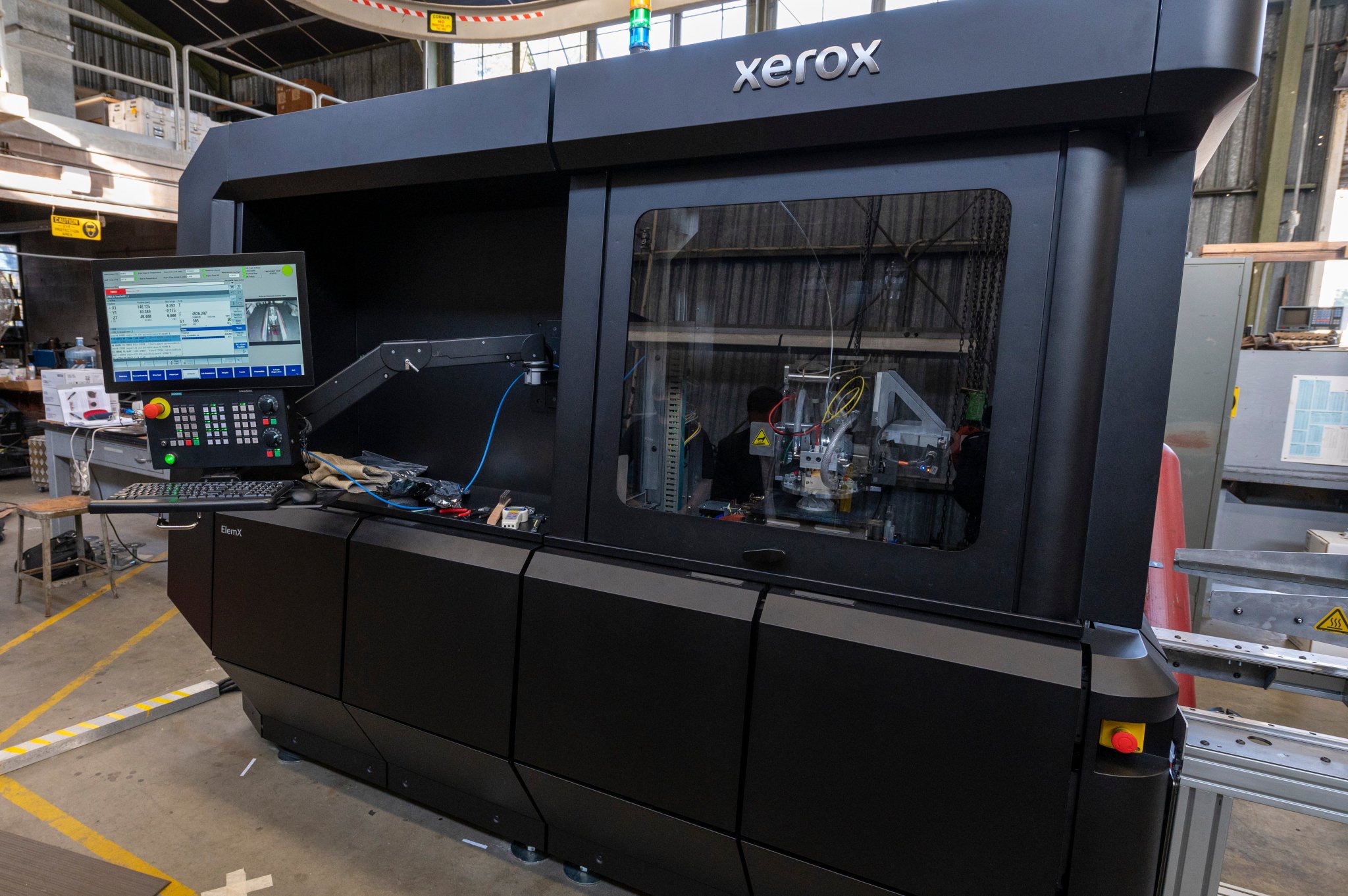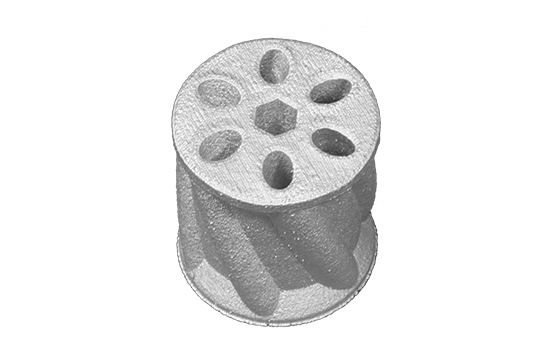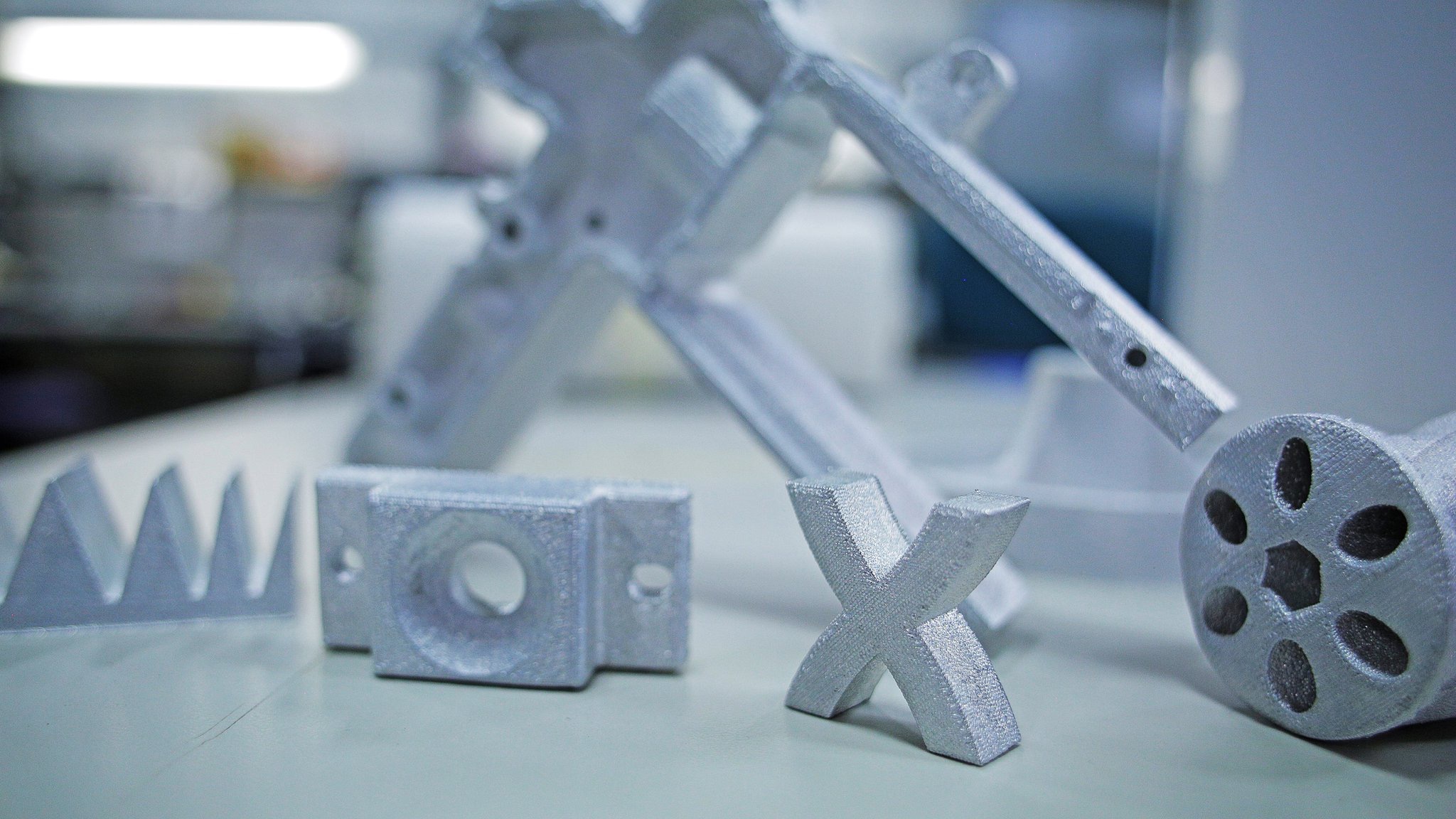After purchasing Vader Systems in 2019, we’ve long been awaiting news of when Xerox (NYSE: XRX) would begin commercializing the startup’s liquid metal 3D printing technology. After hinting at it in its 2020 financial reporting, Xerox has officially announced a strategic collaboration with the Naval Postgraduate School (NPS), as well as a name and look for its first product, the ElemX Liquid Metal Printer. Xerox will undertake a Collaborative Research and Development Agreement (CRADA) with NPS to develop the ElemX system.
We spoke to then-Director of Product Management for Additive Manufacturing for Xerox, Kevin Lewis, about the acquisition in 2019. Interestingly, the copy machine inventor didn’t go the path of powder bed fusion (PBF) or inkjet but opted for the invention of a father and son team— a technology that melts metal wire in a crucible and then deposits it drop by drop.
This is certainly an innovative approach. What’s more, it is potentially very low cost. With a focus on aluminum, the company also strayed from the Ti64 herd in 3D printing. On the upside, Xerox has its very own IP stack with only them playing in it. This gives the firm great prospects to advance what could be a useful technology. But, it has to pioneer and make this technology mature all by its lonesome self. A few months ago the company was able to begin a CRADA with the NPS. Now the firm is deepening its relationships there.
Xerox CTO Naresh Shanker said of the partnership:
“The military supply chain is among the most complex in the world, and NPS understands first-hand the challenges manufacturers must address. This collaboration will aid NPS in pushing adoption of 3D printing throughout the U.S. Navy, and will provide Xerox valuable information to help deliver supply chain flexibility and resiliency to future customers.”

Tali Rosman, Vice President of 3D Printing at Xerox, added:
“Global supply chains leave industries like aerospace, automotive, heavy equipment, and oil and gas vulnerable to external risks. Our goal is to integrate localized 3D printing into their operations, and the real-time feedback from NPS gives us actionable data to continuously improve the ElemX.”
The CRADA will let students do research work on the ElemX printer. This is a smart move by Xerox in letting the Marine Corps and Navy’s future leaders study and work with their 3D printer. This will probably be their first hands-on work with metal printing and may hasten the adoption of Xerox within the US defense establishment. Similar to how SOLIDWORKS was given to students inexpensively in order to then later have them convince their employers to buy costly CAD seats this could pay off handsomely for the copier firm.
Naval Postgraduate School President retired Vice Admiral Ann Rondeau contributed:
“As the Department of the Navy’s applied research university, NPS combines student operational experience with education and research to deliver innovative capabilities and develop innovative leaders with the knowhow to use them. This collaborative research effort with Xerox and the use of their 3D printing innovations is a great example of how NPS uniquely prepares our military students to examine novel approaches to create, make, prototype and manufacture capability wherever they are.”
“From the age of sail to the nuclear era, sailors have been fixing things at sea so they can complete the mission. This partnership is about the strategic ability of the Navy to have sailors on ships with the capability through creativity and technology to advance their operations at sea. Through collaboration, NPS and Xerox are helping build a Navy for the 21st Century.”
The defense market is huge, especially in the U.S. In missiles, aircraft, refits, on-board spare parts printing, topology optimization, and maintenance, repair, and operations, there is a lot of scope to conduct significant 3D printing business there. In improvisational solutions for unanticipated problems, the military will also be able to benefit from 3D printing’s ability to quickly come up with parts that solve problems.

The Navy, particularly, has been interested in on-site repairs. Xerox’s melting metal crucible solution may yet provide a safer path to printing than having a PBF system on board a ship… though, I guess you could mount the printer on a gimbal or something. Wire feedstock is also inherently safer than powder for shipboard storage, so there is one big advantage of Xerox’s system over PBF. So, as a marketing exercise, I think that this is an excellent first customer and an excellent path for the firm to be taking.

The only questions that I would have would be around the maturity of the technology. In the long run, I do believe that the ElemX technology, with its ability to deposit drop-by-drop and perhaps mix metals in a crucible, could be an extremely impactful one. With potentially inexpensive wire feedstock and perhaps some unique abilities to handle aluminum well—a wise choice of an interesting, but tricky material for other systems—it could be a great play.
But I wonder at the company’s ability to build parts right now that are the right Z height and size generally for the Navy’s needs. If the system works well and is reliable, then the company has really gone a long way toward establishing itself as a key player in the minds of a very important group of people for 3D printing’s continued success. On the other hand, there is a significant risk here that the system—it being Xerox’s first—underperforms and will instead leave a negative impression on that important constituency.

In pancakes, you know that, almost invariably, the first one is subpar or fails completely. A fashion designer friend once told me that, in fashion, your first collection is sometimes referred to as your pancake collection and its okay to face plant on the runway because it’s known that it is your first. Similarly, in 3D printing, the first model and indeed the first production runs of new systems are always problematic. That’s why, traditionally, launch customers are Fraunhofers or ORNL or just plain-old Charlie—people who relish and expect the unknown of a new system. Here Xerox is being bold, which has its risks. But, anchor’s aweigh!
Subscribe to Our Email Newsletter
Stay up-to-date on all the latest news from the 3D printing industry and receive information and offers from third party vendors.
Print Services
Upload your 3D Models and get them printed quickly and efficiently.
You May Also Like
The Dental Additive Manufacturing Market Could Nearly Double by 2033, According to AM Research
According to an AM Research report from 2024, the medical device industry, specifically in dentistry, prosthetics, and audiology, is expected to see significant growth as these segments continue to benefit from...
Heating Up: 3D Systems’ Scott Green Discusses 3D Printing’s Potential in the Data Center Industry
The relentless rise of NVIDIA, the steadily increasing pledges of major private and public investments in national infrastructure projects around the world, and the general cultural obsession with AI have...
AM Research Webinar Explores Continuum’s Sustainable Metal Additive Manufacturing Powders
Metal additive manufacturing (AM) powder supplier Continuum Powders is working to develop solutions that empower industries to reduce waste and optimize their resources. An independent life cycle assessment (LCA) of...
3D Printed Footwear Startup Koobz Lands $7.2M in Seed Round
California-based Koobz is focused on reshoring the U.S. footwear supply chain with advanced manufacturing processes, including 3D printing. The startup just announced that it has added $6 million to its...
































